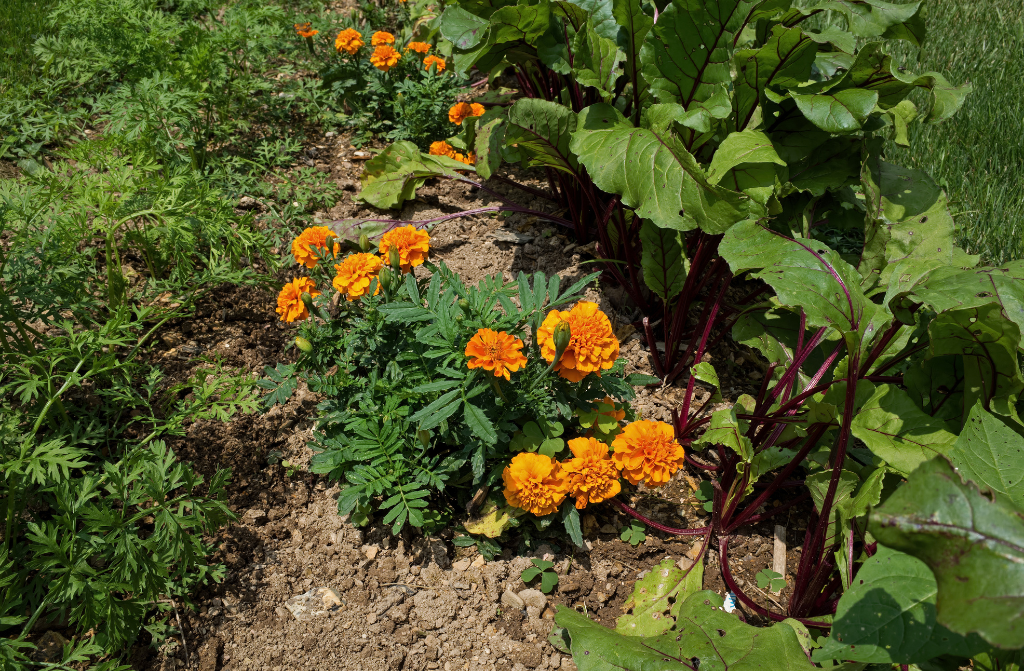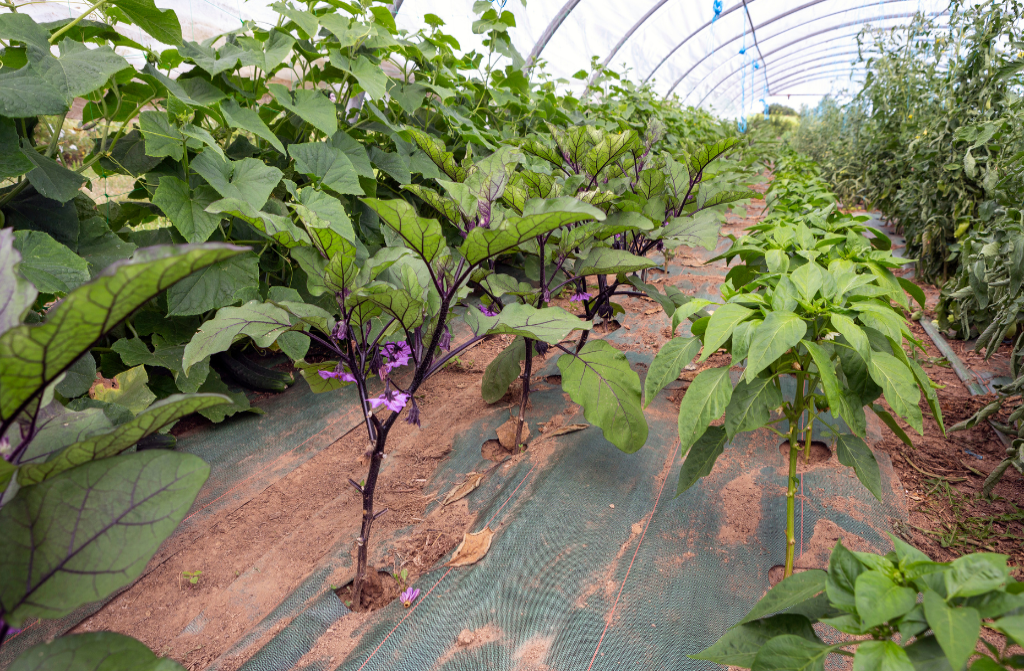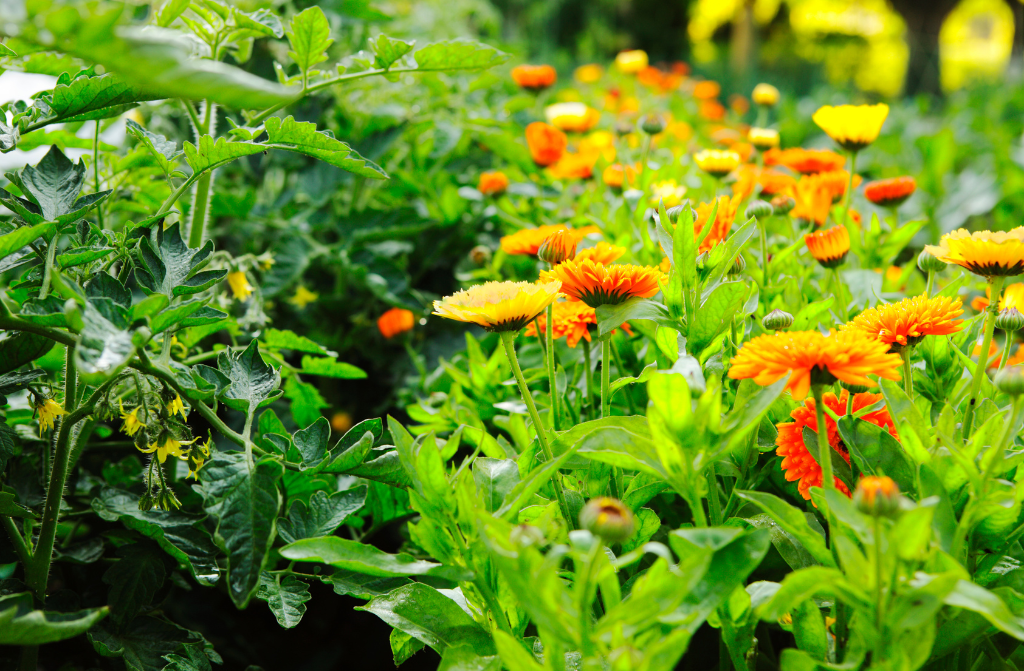


Introduction
As a passionate greenhouse gardener, I’ve come to appreciate the wonders of companion planting in a greenhouse. The art of pairing specific plants together in the same growing space isn’t just a trend; it’s a strategic approach that can transform your greenhouse into a harmonious haven of flourishing vegetation. In this article, I’ll delve into the exceptional world of companion planting within the controlled environment of a greenhouse. From maximizing space to enhancing plant health, I’ll provide valuable insights and practical suggestions that are sure to elevate your gardening game.
Advantages of Greenhouse Gardening
Before we delve into the intricacies of companion planting, let’s first acknowledge the remarkable advantages of greenhouse gardening. The controlled environment of a greenhouse extends growing seasons, shields plants from harsh weather conditions, and provides a haven against common pests. Imagine having the power to create your microcosm of thriving plant life, irrespective of external elements. That’s the magic of a greenhouse.
What is Companion Planting?
At its core, companion planting is a holistic gardening approach that capitalizes on the mutually beneficial relationships between certain plants. Think of it as a botanical partnership where each plant contributes to the success of the other. This method isn’t a recent discovery; indigenous cultures and traditional farming practices have been using it for centuries. However, the application of companion planting in a greenhouse setting adds a layer of sophistication and control that can yield astounding results.
Why Use Companion Planting in a Greenhouse?
You might wonder why bother with companion planting in a greenhouse when the environment is already favorable. Well, that’s precisely where the magic lies. Greenhouse gardening offers an opportunity to curate the ideal conditions for specific plant pairings to thrive. The controlled atmosphere allows for experimentation with diverse combinations that might not be feasible outdoors. By harnessing this potential, you can achieve greater yields, healthier plants, and a harmonious ecosystem.
Examples of Compatible Companion Plants
Let’s delve into the heart of companion planting – the art of matching plants that work in harmony. Think of marigolds standing sentinel beside tomatoes, deterring invasive insects while promoting growth. Or the classic trio of beans, corn, and squash – the Three Sisters – where each plant brings something unique to the table. In a greenhouse, you can explore the magic of combining aromatic herbs like basil with tomatoes, discouraging pests and enhancing flavors simultaneously.
Complementary Growth Habits
One of the secrets behind successful companion planting is the intelligent pairing of plants with complementary growth habits. Taller plants can provide shade to shorter ones, preventing excessive sun exposure, while shallow-rooted plants can coexist with those that have deeper root systems, effectively utilizing the vertical space. It’s a choreographed dance of growth that ensures every plant occupies its designated role without hindering its neighbors.
Natural Pest Control
Say goodbye to chemical pesticides. Greenhouse gardening with companion planting introduces a natural defense mechanism against pests. Strong-smelling plants like garlic and onions act as nature’s pest repellents, safeguarding neighboring plants from unwanted visitors. This biological shield not only protects your crops but also maintains the integrity of your greenhouse’s ecosystem.
Nutrient Enhancement
The greenhouse environment allows for an intimate connection with your plants, including their nutritional needs. Certain companion plants, known as nitrogen fixers, have the remarkable ability to draw nitrogen from the air and enrich the soil. Leguminous plants like peas and beans are excellent examples. By incorporating them into your greenhouse ecosystem, you’re ensuring a consistent source of nutrients for your main crops.
Maximizing Space and Yield
Space is a precious commodity in any greenhouse. Companion planting offers a strategic solution to maximize every square inch. Interplanting, where you mix different plant types within the same bed, and vertical gardening, where climbing plants make use of trellises and supports, both allow you to cultivate a diverse range of crops without compromising on space or yield.
Common Mistakes to Avoid
As with any gardening endeavor, there are pitfalls to be mindful of when practicing companion planting in a greenhouse. Overcrowding, for instance, can lead to competition for resources, stunted growth, and susceptibility to disease. Proper planning and spacing are essential to ensure a harmonious coexistence among your chosen companions. Another common mistake is failing to consider the compatibility of plant types. Some plants just don’t get along, and planting them side by side can lead to a less productive and less healthy garden.
Creating a Companion Planting Plan
To reap the benefits of companion planting, a well-thought-out plan is crucial. Consider factors like plant height, growth rate, and their specific compatibility. Also, incorporate crop rotation to maintain soil health and prevent the buildup of pests and diseases. Succession planting, where new crops are sown as others are harvested, ensures a continuous supply of fresh produce throughout the growing season.
Implementing Care and Maintenance
Companion planting doesn’t negate the need for care and attention. Regular watering, proper pruning, and vigilant monitoring of pest populations are all still essential tasks. While companion plants can play a protective role, they aren’t invincible. Stay engaged with your garden, and you’ll enjoy the rewards of a thriving ecosystem.
Successful Companion Planting Combinations
Let’s dive into some specific companion planting combinations that have proven their worth in the greenhouse. Consider pairing fragrant herbs like rosemary and sage with tomatoes to deter pests while infusing culinary magic into your dishes. For an efficient use of space, plant lettuce beneath taller tomato plants to benefit from the shade they provide. The partnership between strawberries and spinach is another winner, with the spinach acting as a living mulch to keep the soil moist and cool.
Personal Tips and Insights
In my own journey as a greenhouse enthusiast, I’ve witnessed the transformation that companion planting can bring. There’s a special joy in observing plants working together harmoniously, creating an ecosystem that feels alive and interconnected. The greenhouse becomes not just a place of cultivation but a space where nature’s wisdom unfolds before your eyes. Experiment, observe, and let nature be your guide – the rewards are boundless.
Conclusion
In the realm of greenhouse gardening, companion planting stands as a testament to the intricate balance of nature. The unique advantages of a controlled environment allow us to harness the magic of plant partnerships for optimal growth, health, and yield. From pest control to nutrient enhancement and space optimization, the benefits are undeniable. So, as you embark on your journey of cultivating a greenhouse garden, consider the vibrant world of companion planting. Embrace the art of pairing, and watch your garden flourish into a symphony of life.
FAQs (Frequently Asked Questions)
- Can I practice companion planting in any type of greenhouse?
Absolutely! Companion planting can be adapted to various greenhouse styles and sizes. - What are some common plants that should not be paired together?
Avoid pairing plants that have conflicting growth habits or release allelopathic compounds. - Can I apply companion planting principles to hydroponic systems too?
Yes, the concept of companion planting can be adapted to hydroponic setups, providing similar benefits. - How do I deal with potential diseases that might spread in a greenhouse?
Regular monitoring, proper spacing, and good sanitation practices are key to preventing disease outbreaks. - Are there any plants that are universally beneficial as companion plants?
While some plants have general compatibility, the best combinations can vary based on the specific crops you’re growing.
